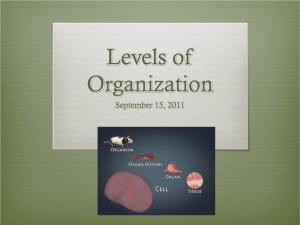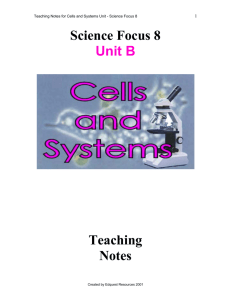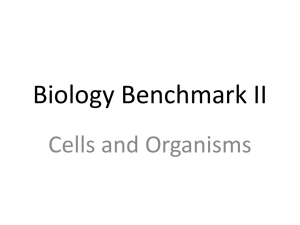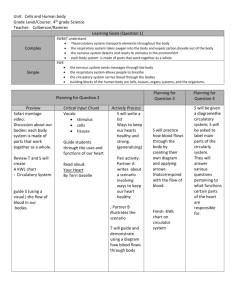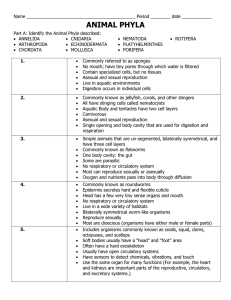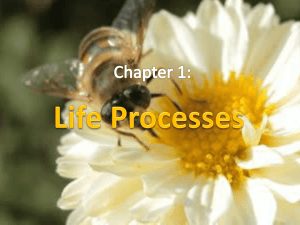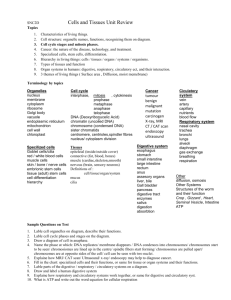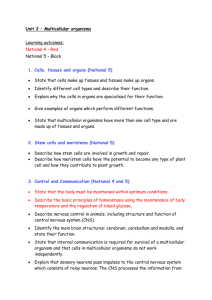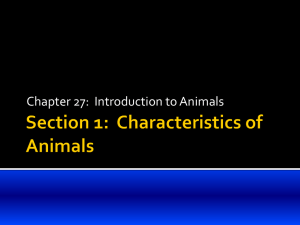Cells and Systems
advertisement
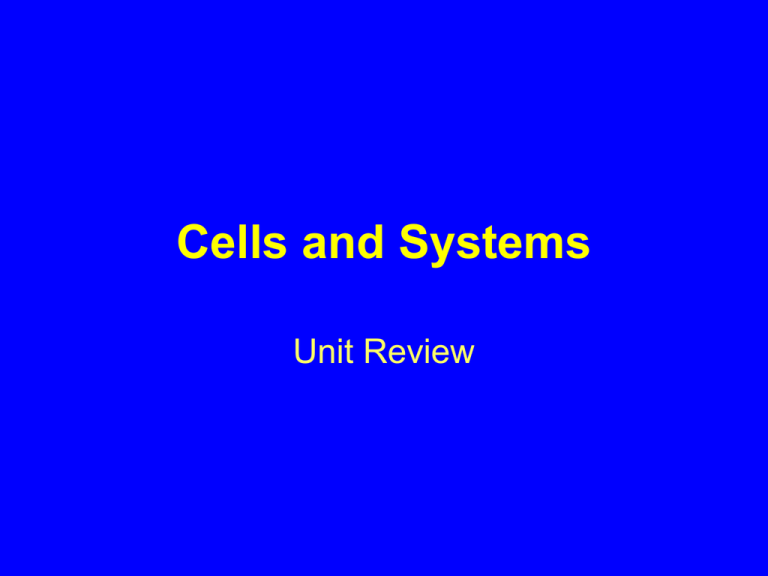
Cells and Systems Unit Review Living Organisms • the basic unit of life is called a CELL – cells are organized into tissues and organs to perform different functions • unicellular organisms → single-celled • multicellular organisms → many-celled • all organisms – – – – – need energy from the sun or food respond and adapt to their environment reproduce so life goes on grow produce wastes (by-product of using energy) Value of Microscopes • made of small lenses • magnify objects so we can see them • Leeuwanhoek made the first one – magnified things 300x – he saw single cell organisms • today – compound light microscopes can magnify something 2000x – electron microscopes can magnify something 2,000,000x Parts of a Compound Microscope Structures of a Cell Cell Membrane – containment Cell Wall – structure Cytoplasm – distribution (food, oxygen) Nucleus – control centre Vacuole – storage containers Chloroplast – photosynthesis Cell Functions • cells need a constant supply of oxygen, water and food to work • they also need to get rid of waste products • everything that comes into or goes out of a cell must pass through the cell membrane – the membrane is selectively permeable → allows some substances and stops others Fluid Movement in Cells • diffusion - spreading out of particles from an area of more concentration to areas of less concentration – food, oxygen, etc. move into cell – waste product move out of the cell • osmosis – diffusion of water through a selectively permeable membrane Fluid Movement in Plants • plants need a lot of water to make food by photosynthesis • water comes into the plant by through the root hairs (by osmosis) • air (oxygen) comes in through openings on leaves called stomata • water is lost from the plant by transpiration (a types of evaporation) • 2 types of vascular tissues that transport things around inside the plant: – phloem tissues transport sugars made in leaves, to the rest of the plant – xylem tissues transports water and minerals from roots to other parts of the plant Cell Specialization & Organization • cells are specialized for particular tasks • cells with the same structure and function are grouped into tissues – e.g. muscle tissue, nerve tissue, skin tissue – e.g. phloem and xylem tissue • groups of different tissues form organs – e.g. stomach, lungs, heart, eyes – e.g. roots, stems, leaves • organs work together in systems – e.g. digestive system, circulatory system – e.g. root system (below ground) and shoot system (above ground) • multi-cellular organisms have advantages over single-celled organisms: – can grow large – can live in a variety of environments – can get energy from a variety of foods – can work more efficiently Human Body Systems System Digestive Respiratory Circulatory Nervous Excretory Functions breaks down food, absorbs food particles, eliminates waste exchanges oxygen and carbon dioxide circulates blood which transports food particles, dissolved gases and other materials controls and co-ordinates body activities; senses internal and external changes regulates blood composition and gets rid of waste fluids Body Systems & Human Health • 8% of adult body is made up of blood Component % of Blood Volume Main Function plasma 55% carries nutrients, waste products, hormones & blood cells carry oxygen red blood cells 44% white blood cells <1% defend body against infection & disease platelets <1% cause blood to clot at wounds to prevent blood loss Disorders in Human Body Systems System Digestive Disorders •low fibre, high fat, to much sugar, to much salt, smoking, alcohol, etc can cause problems such as ulcers in stomach, bowel disease, cancers, etc. Respiratory •smoking and pollution irritate lining of lungs resulting in cough & difficulty breathing; can lead to lung cancer Circulatory •disorders of circulatory system are the leading cause of death in North America •most common problem is high blood pressure which affects circulation and can lead to heart attach (damage to heart muscle) and strokes (brain damage) •smoking, poor diet, and lack of exercise contribute to the problem

